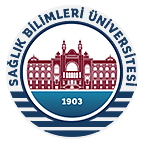ABSTRACT
In our study, the deconstructive effect of nitrogen mustard on the lung exposed to blunt thorax trauma and the role of proanthocyanidine in preventing this scene were investigated. The rats were separated into four groups by the simple random sampling method and each group contained 15 rats. In all the groups cases were followed up for three days, and sacrificed after the follow up period. Samplings from the tissue were carried out for histopathological and biochemical parameter measurements [superoxide dismutase (SOD), glutathione peroxidase (GPx), catalase (CAT) and malondialdehyde (MDA)], and recorded. In the control group nothing was administered. In the second (proanthocyanidine) group proanthocyanidine was administered to the subjects during the follow up period. In the third group nitrogen mustard following blunt thorax trauma application before the 3-days follow up period was administered. In the fourth treatment group nitrogen mustard following blunt thorax trauma application before the 3-days follow up period was performed with proanthocyanidine administration 8 hours before the blunt thorax trauma and nitrogen mustard application. Proanthocyanidine treatment continued during the 3 days of follow up. Alveolar capillary damage, elevated leukocyte infiltration at alveolar area and fibrosis were found in the histologic investigation of the third group. Histological findings of the proanthocyanidine and treatment groups were similar to those of the control group (p>0.05). Exposure to nitrogen mustard gas caused an elevation in MDA levels and decrease in the GPx and SOD activities (p<0.05). MDA levels, GPx and SOD activities were the same in the lung tissues of the proanthocyanidine and control groups (p>0.05). In the treatment group, decrease in the MDA levels and increase in the CAT and GPx activities were observed (p<0.05). Nitrogen mustard administered with blunt thorax trauma caused oxidative stress and tissue damage, and proanthocyanidine improved the scene in this study.



